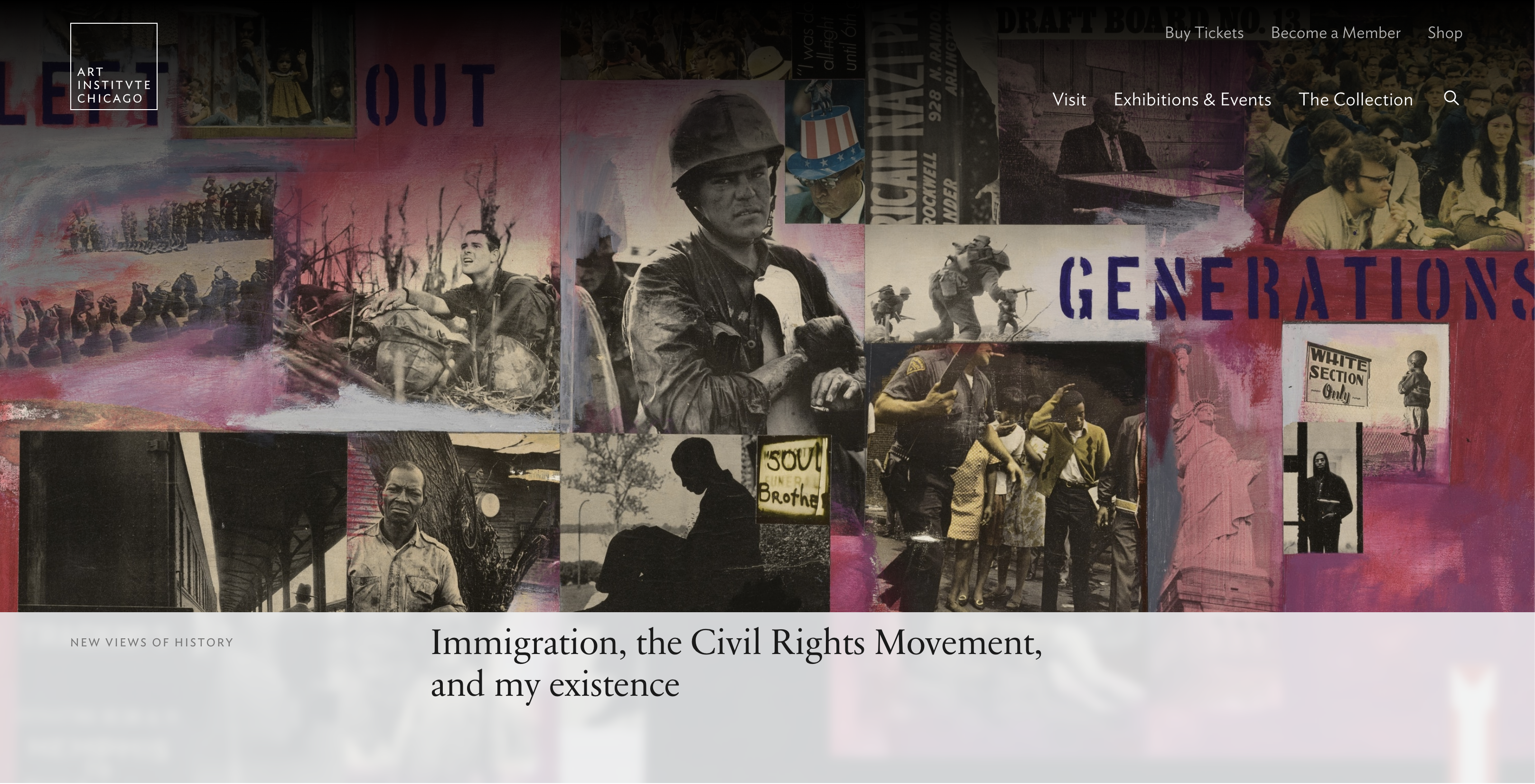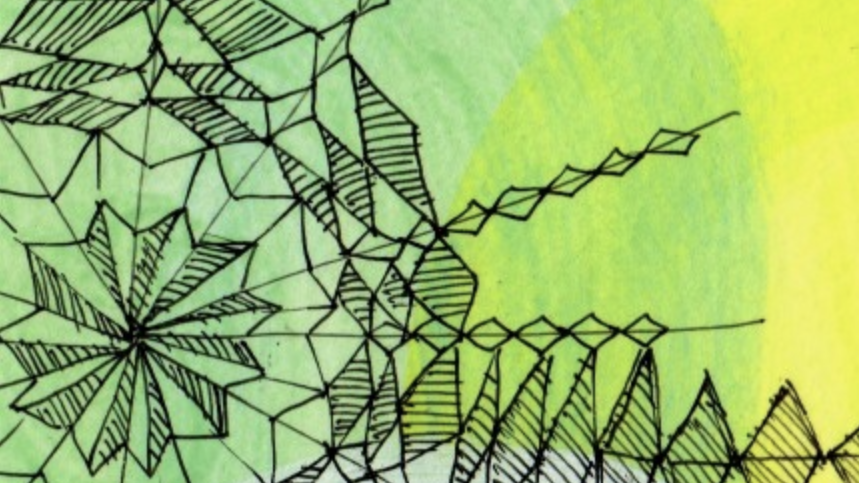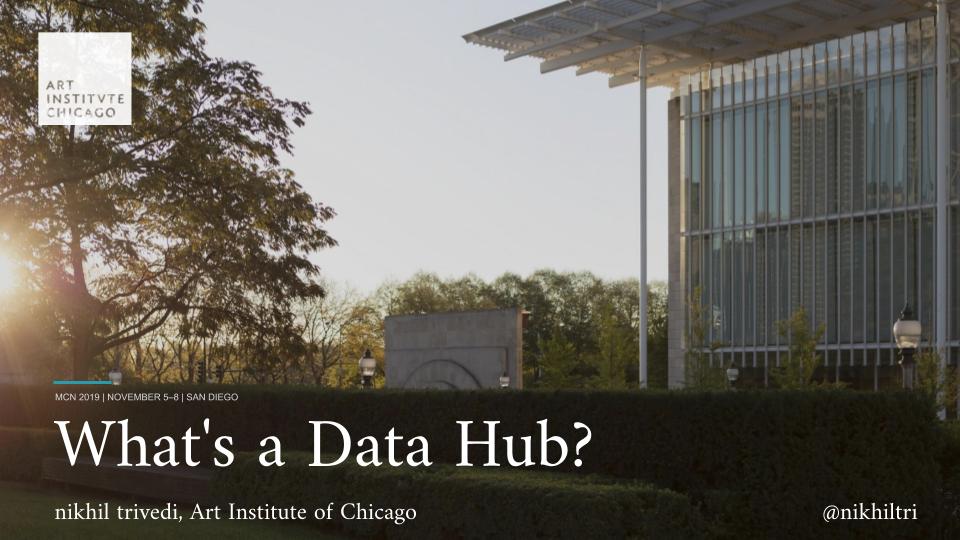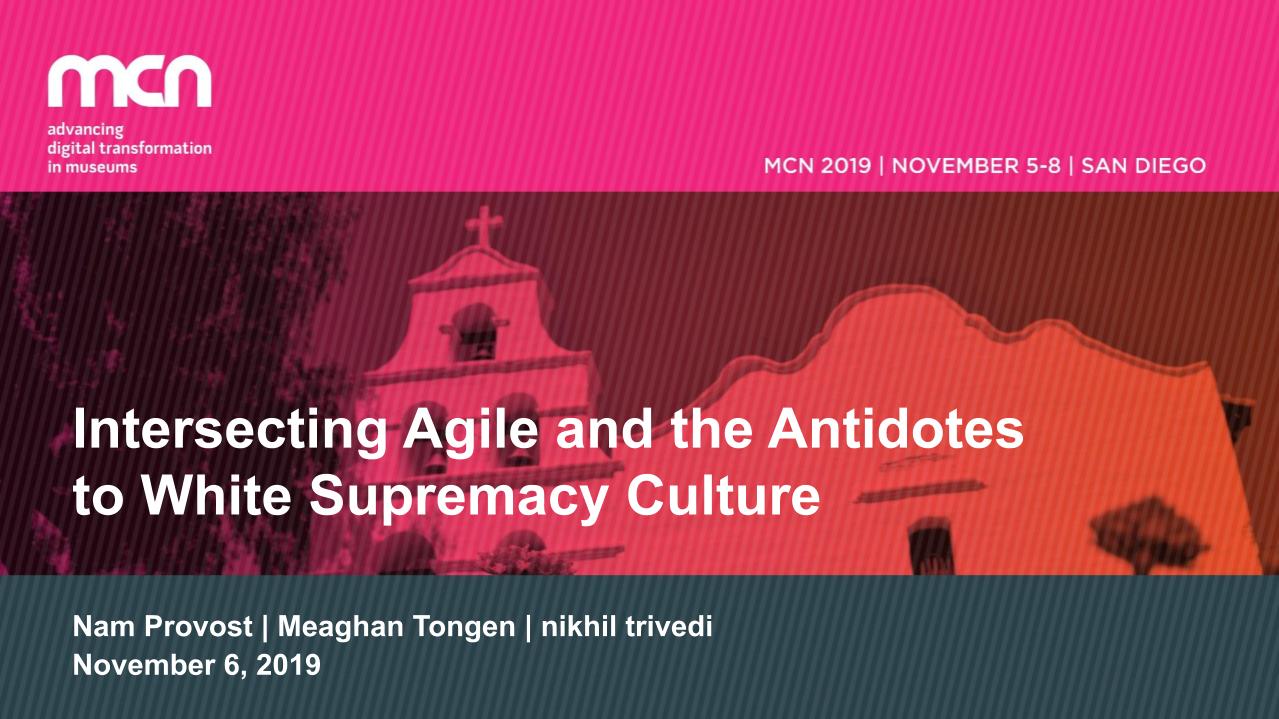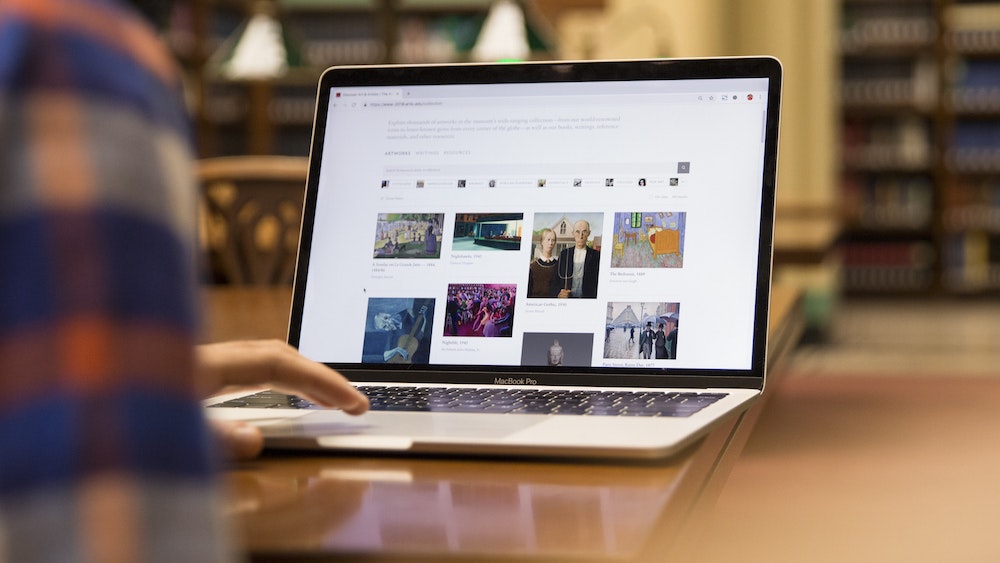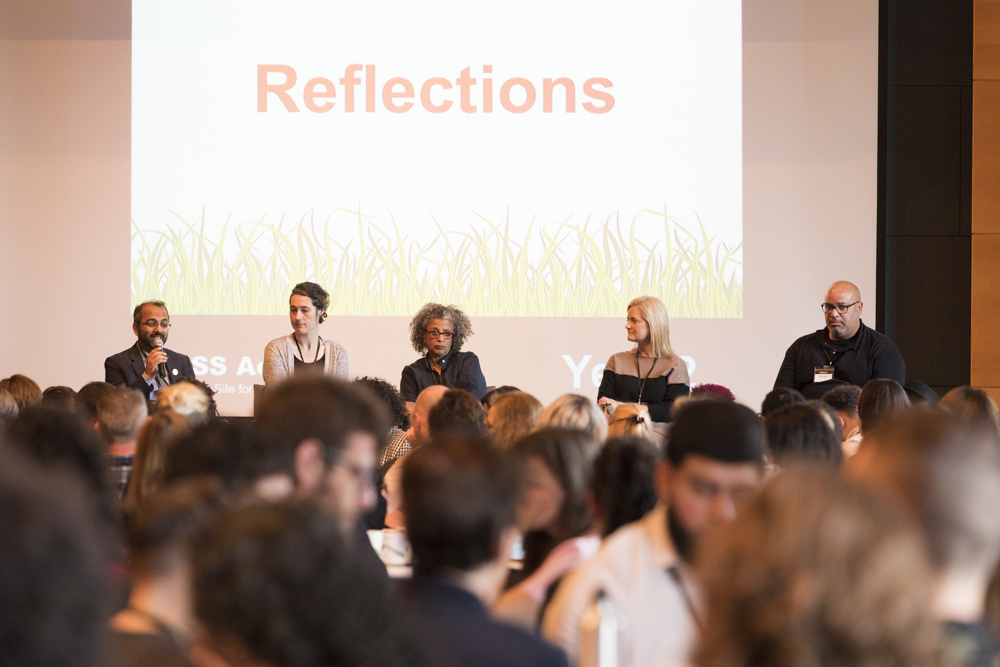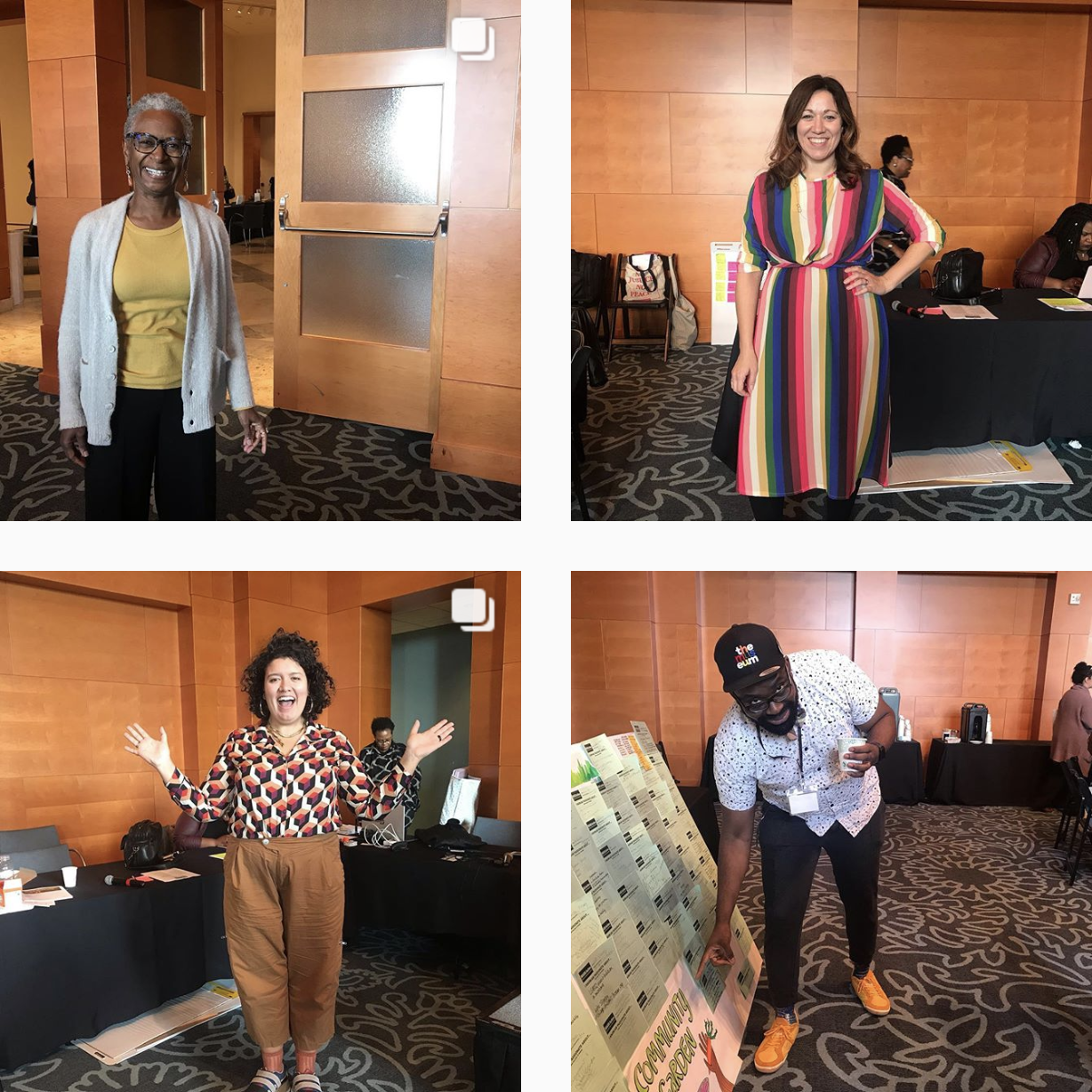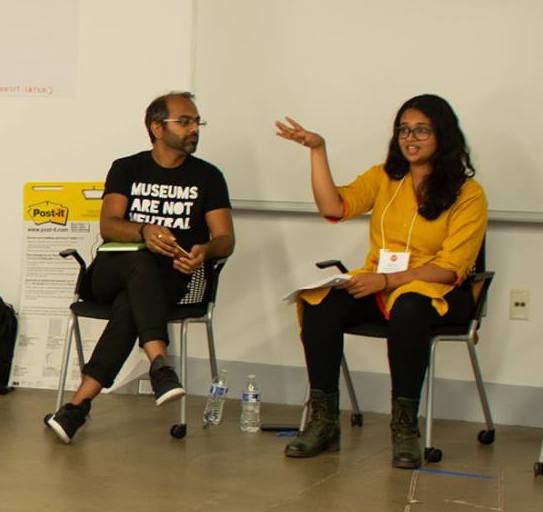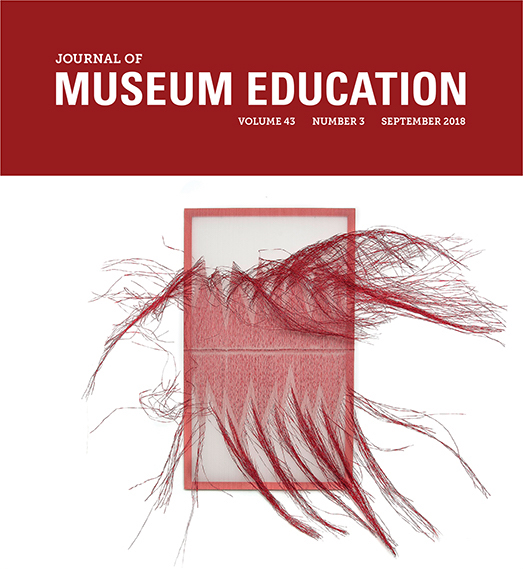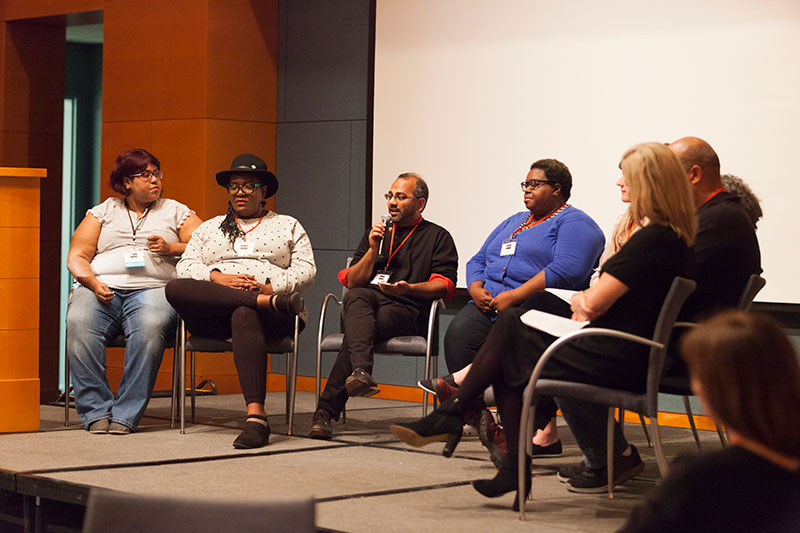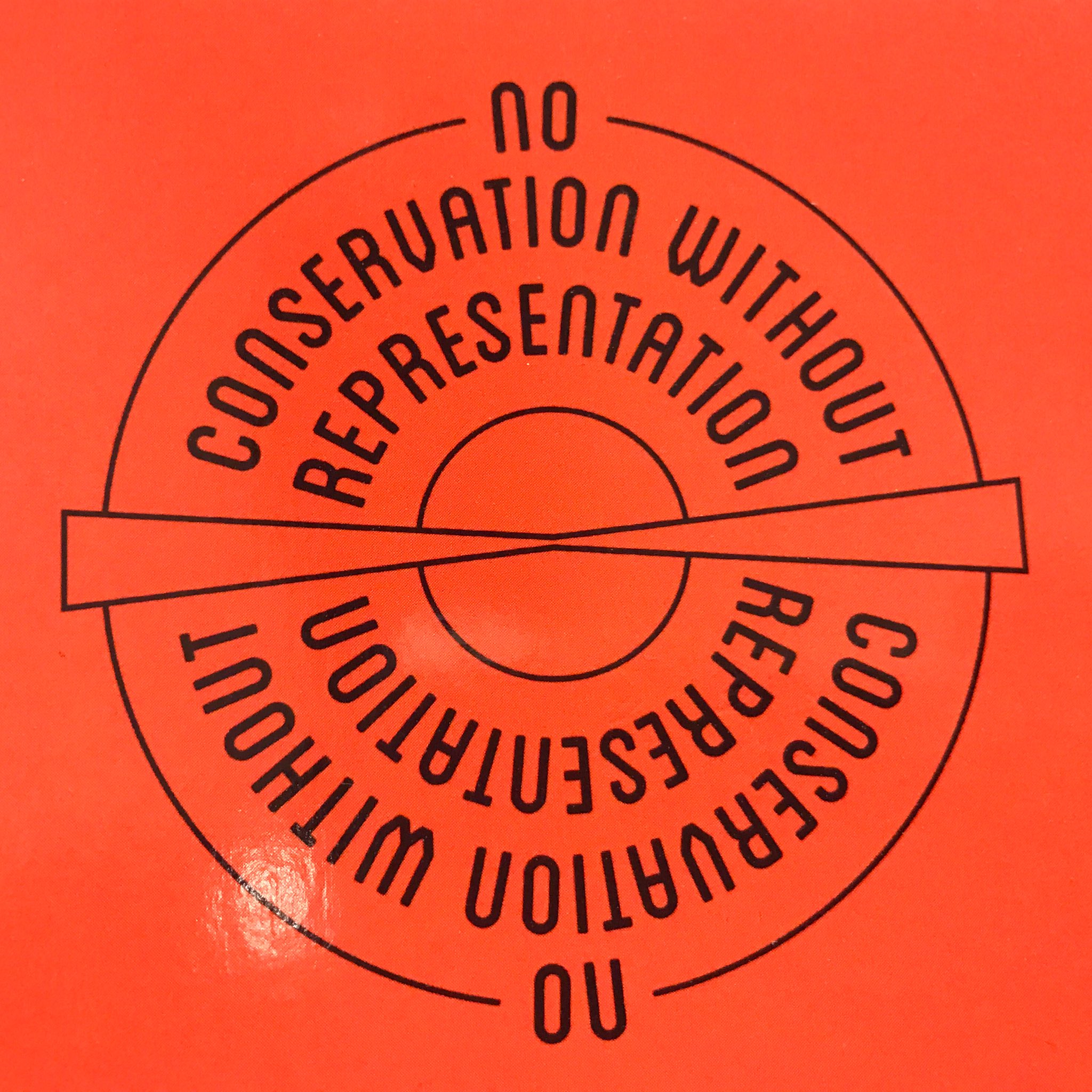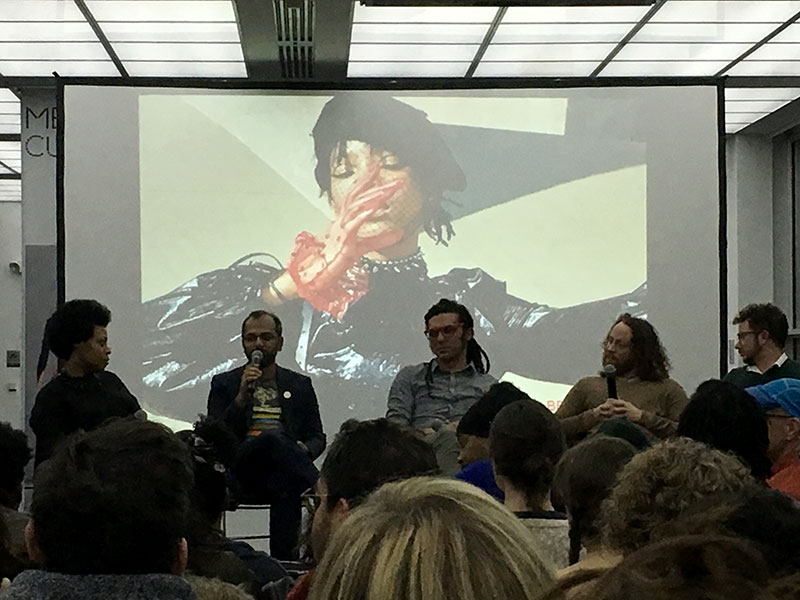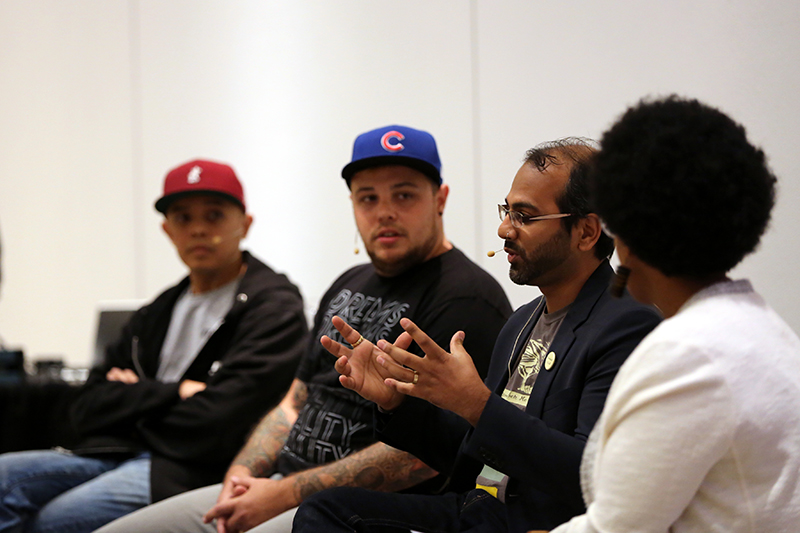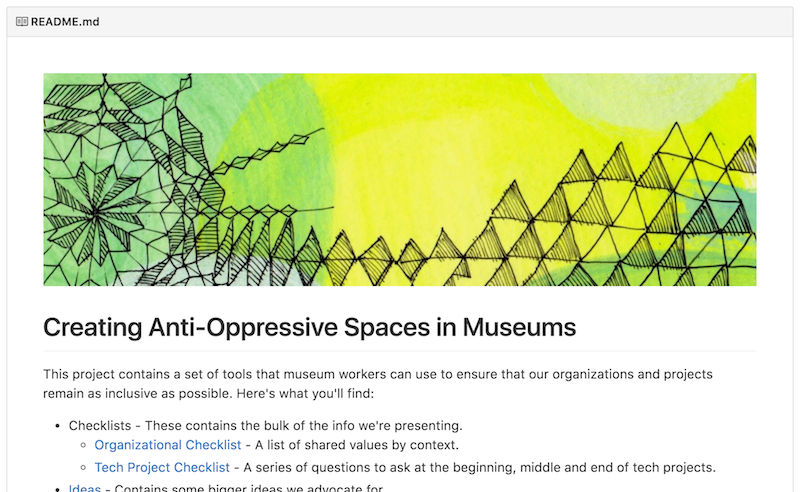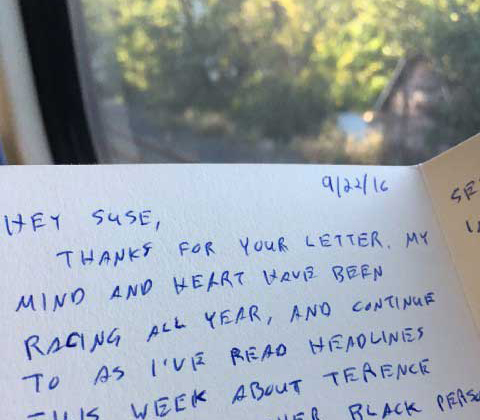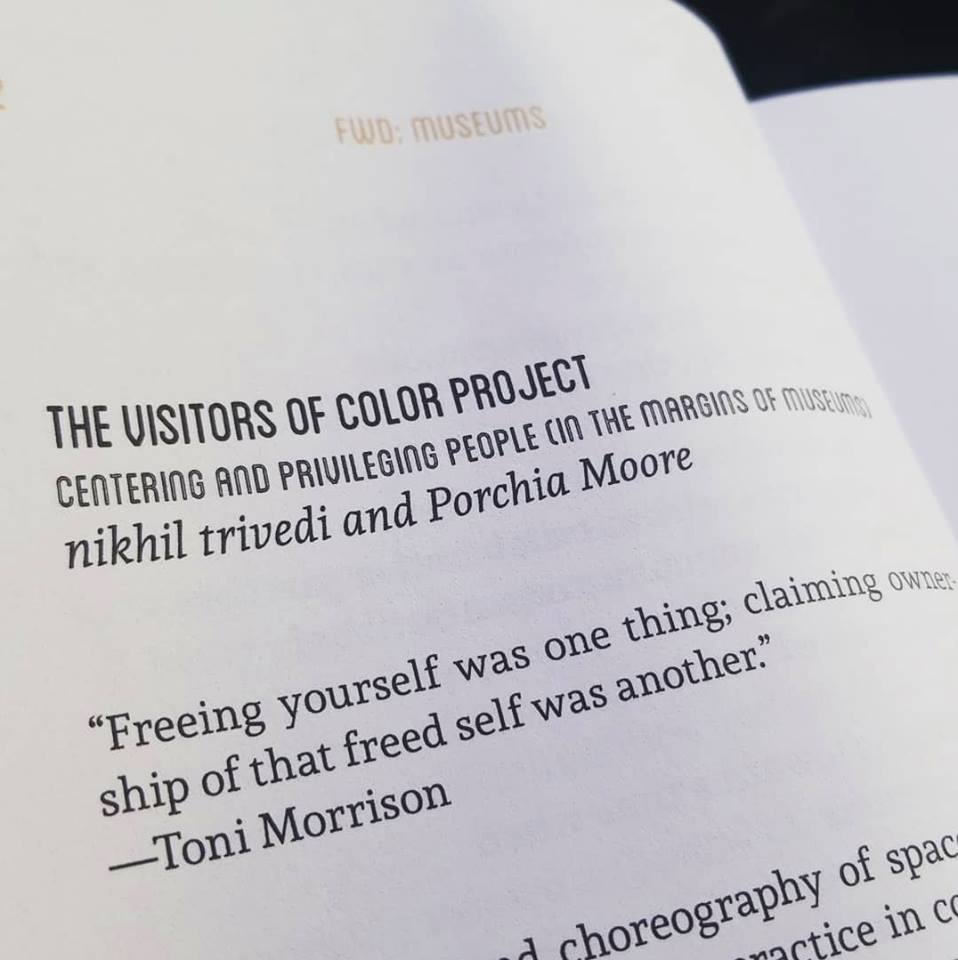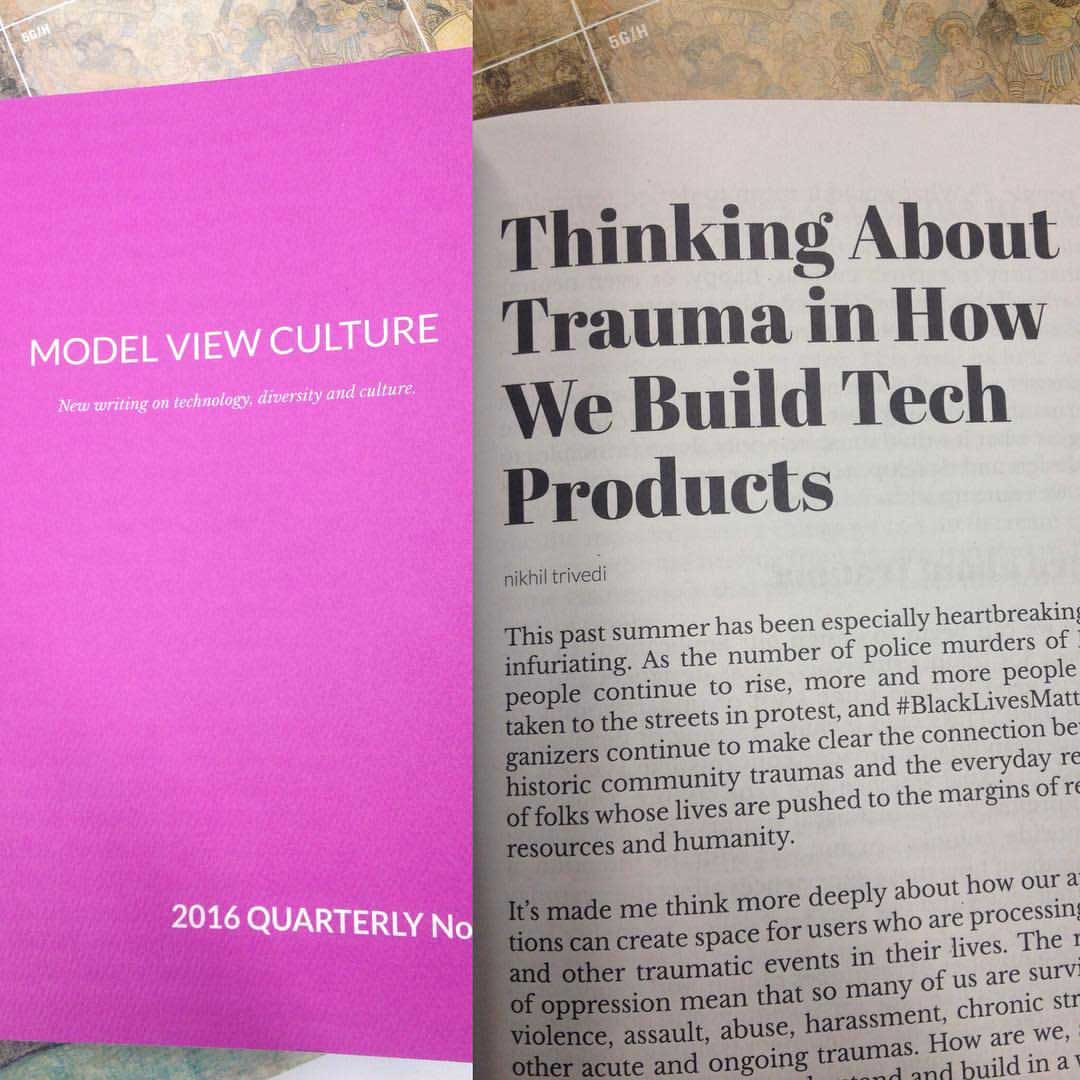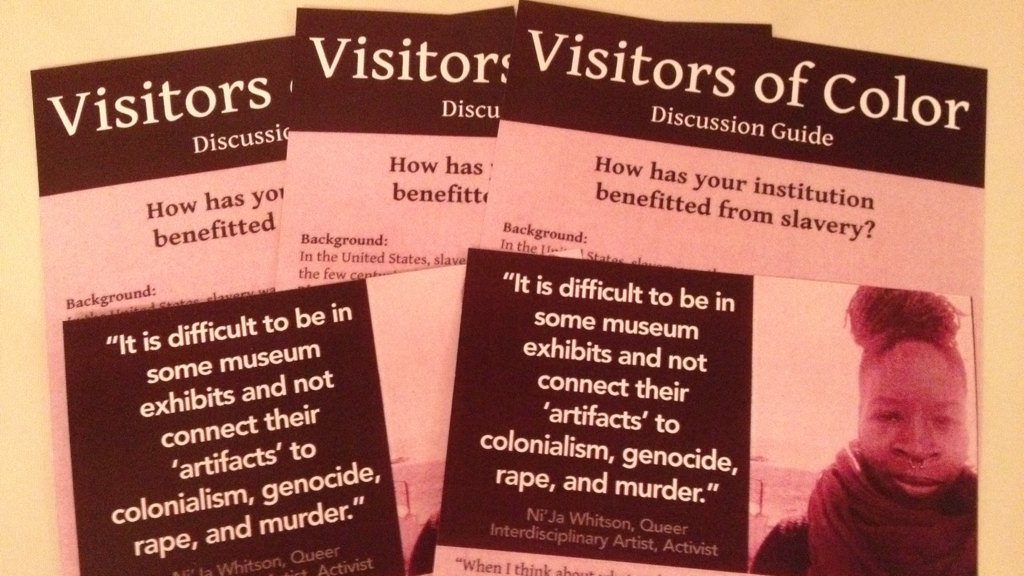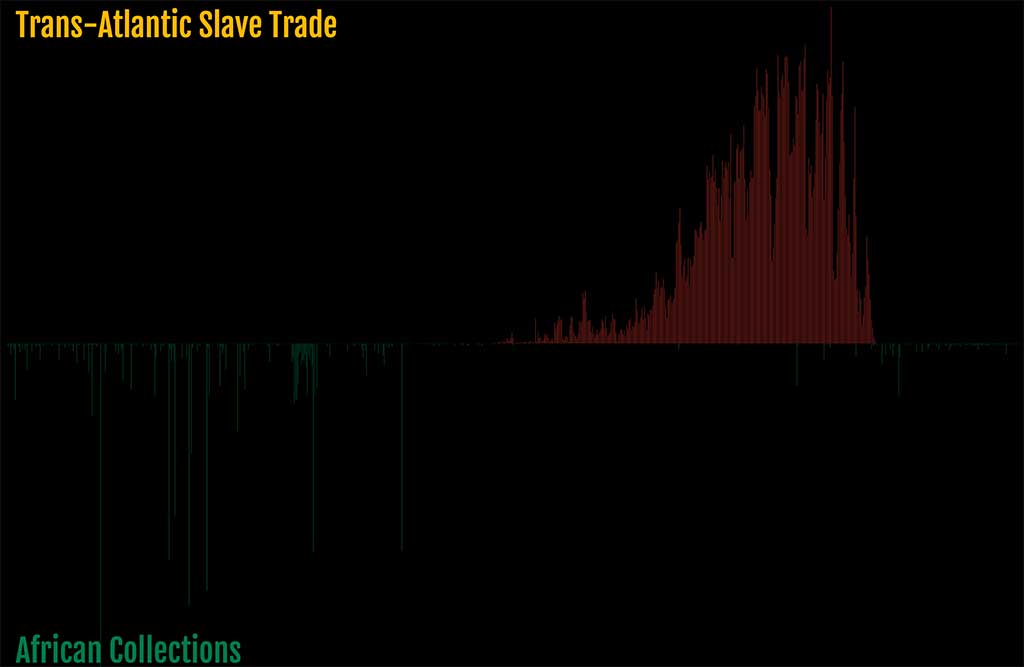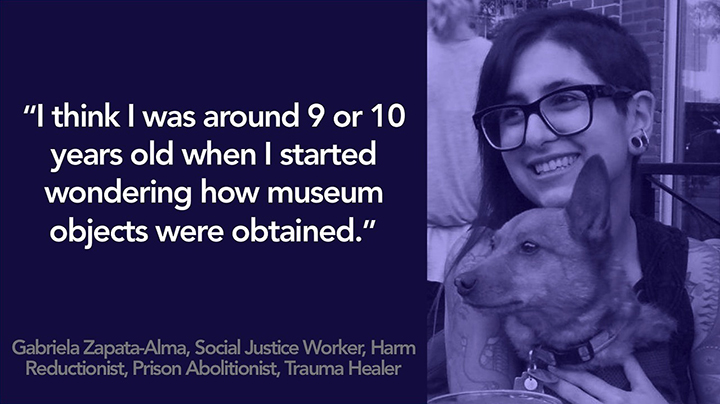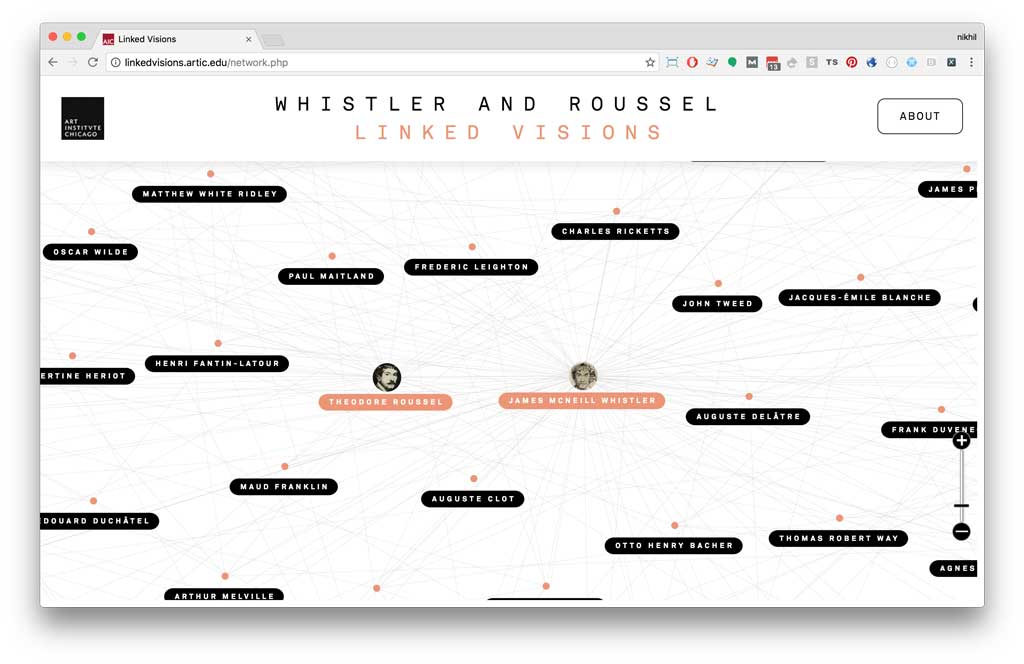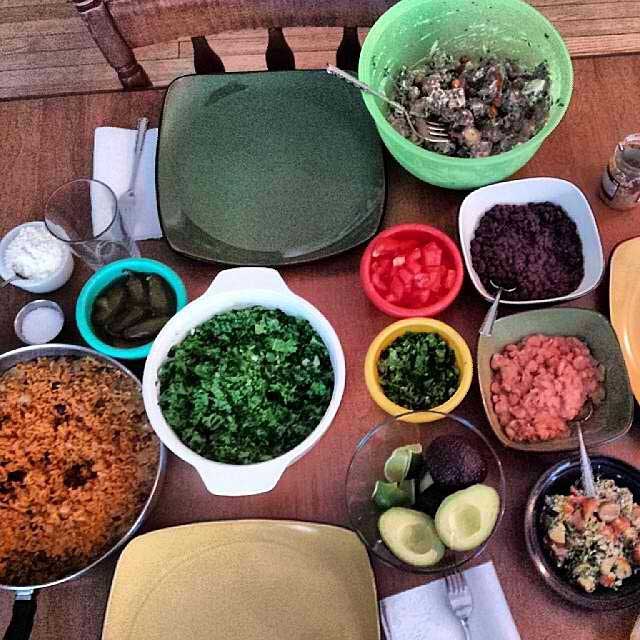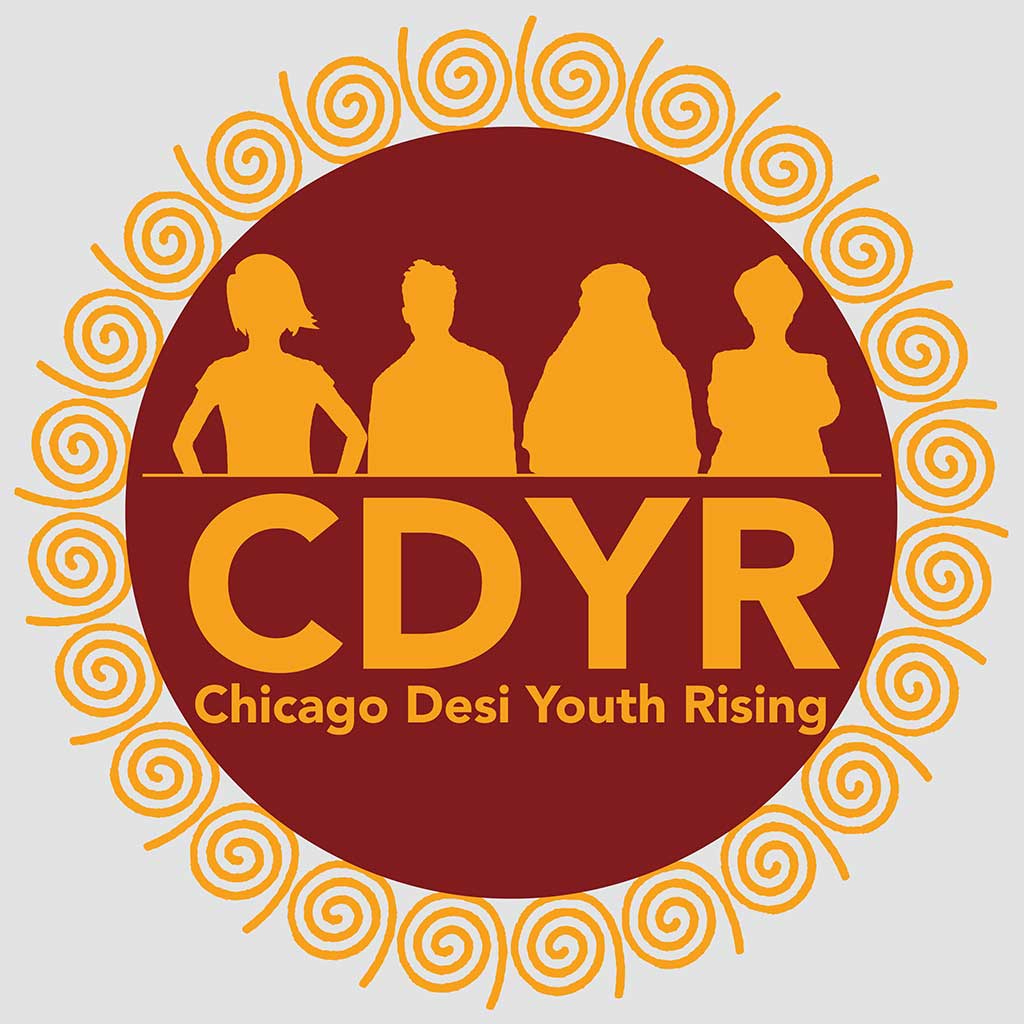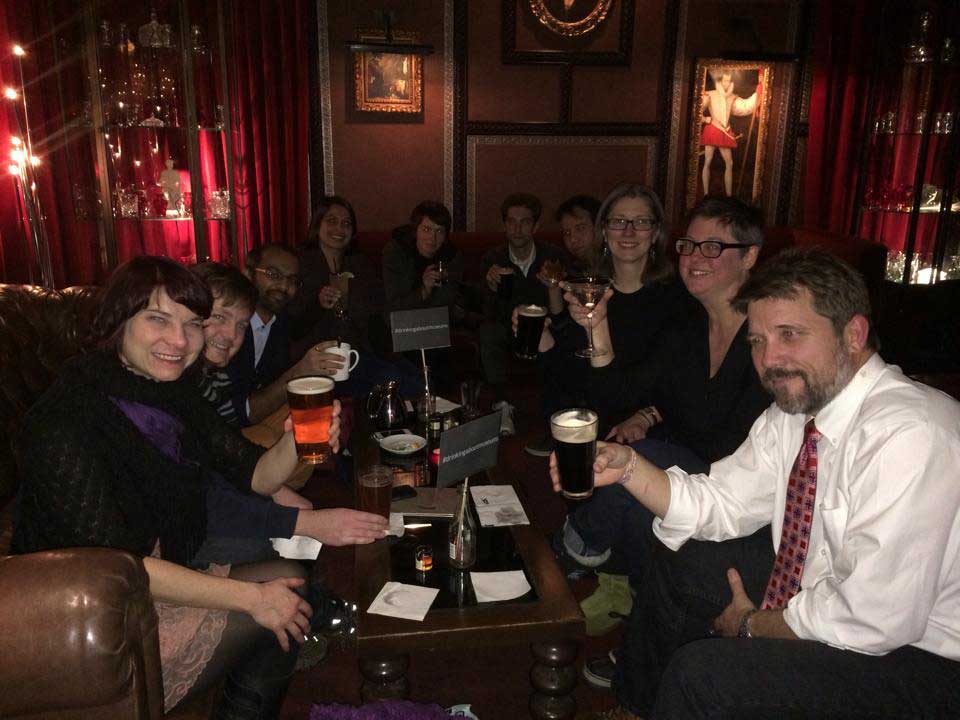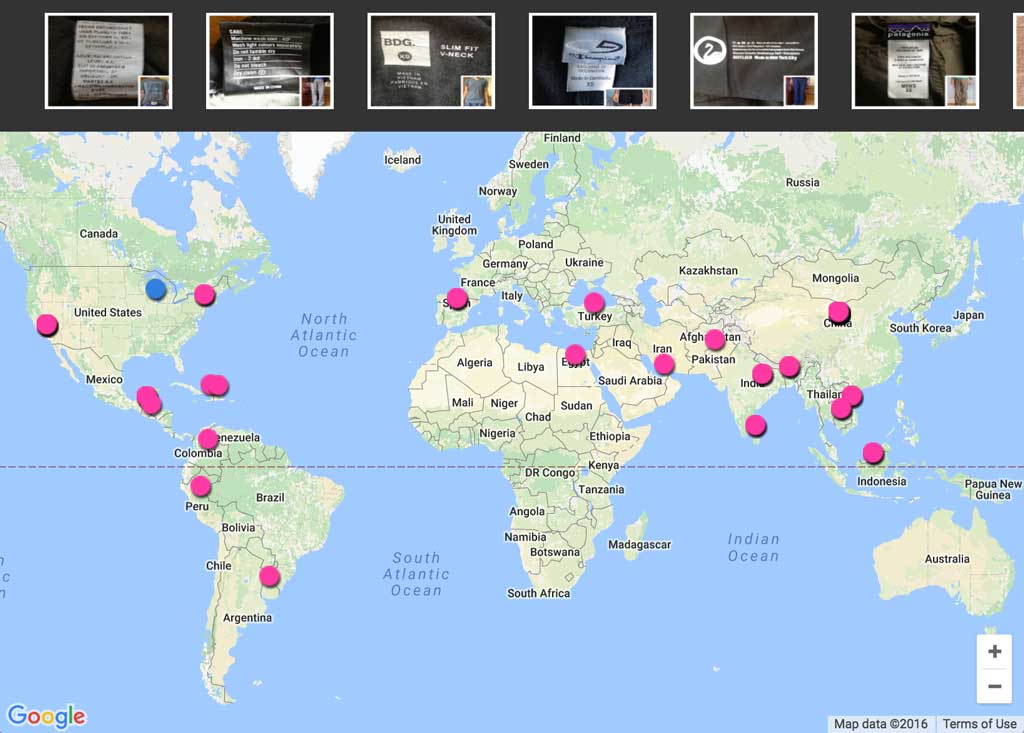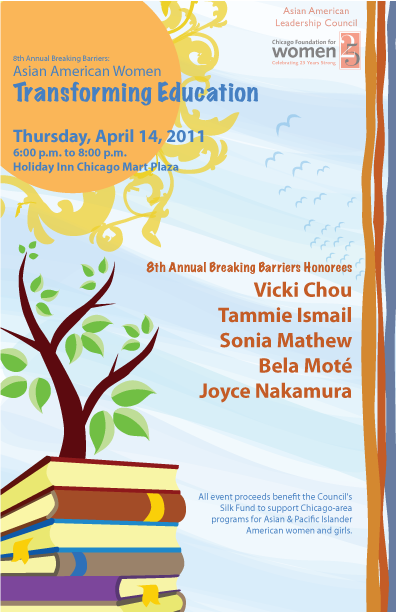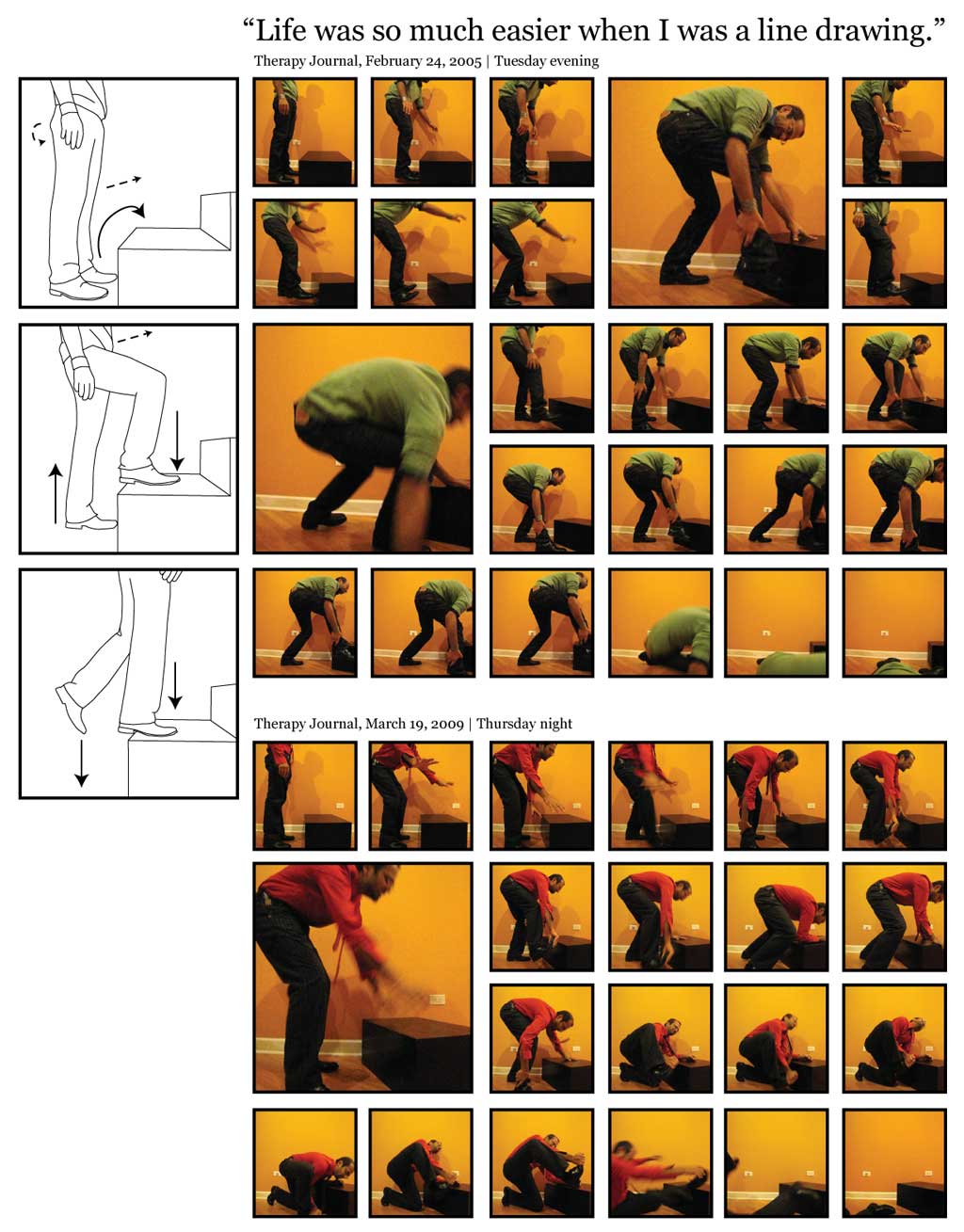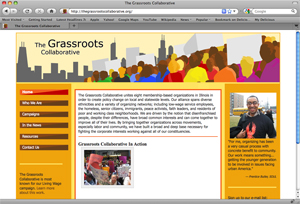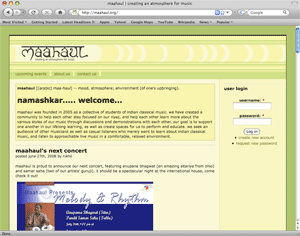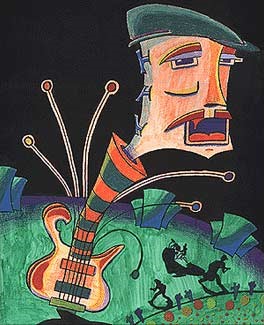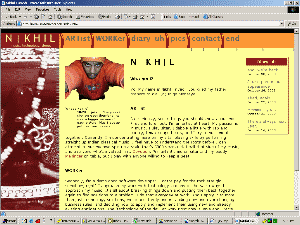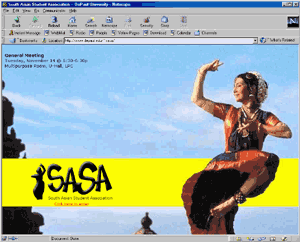2020
Immigration, the Civil Rights Movement, and my existence
August 2020For the Art Institute blog, I wrote an article linking immigration, the Civil Rights Movement, and art created at the time by Black artists through my parents’ immigration stories. It was a way to ground the Black uprisings this summer in a long history of organizing in response to racial violence, and it was also a sweet way for me to document my parents’ stories as their memories are getting fuzzy.
Check it out on artic.eduUncovering white supremacy culture in museum work
March 2020Along with a few museum friends Hannah Heller and Joanne Jones-Rizzi, I wrote an article describing the ways white supremacy culture operates in museums. Drawing from Kenneth Jones and Tema Okun’s work that names the cultural attributes of White supremacy in organizations, we took a few of the characteristics that resonated strongly in our work as educators and community builders and unpacked what they specifically look like in museums and what their impacts are.
Check it out on The Incluseum2019
Data Hub at the Art Institute of Chicago
November 2019As part of the artic.edu website redesign, we created a central data repository for all of our public content that can feed the website, our mobile apps, in-gallery interactives, and an eventual public API. Our Data Hub collects all our public data in one place, serve it all up through a uniform API, and make the content collected from all our platforms searchable in a single place. Watch a talk I gave about the project at MCN 2019.
Check it out on YouTubeIntersecting Agile and the Antidotes to White Supremacy Culture
November 2019I organized a conference panel discussion along with a few colleagues from the Minneapolis Institute of Art exploring how Scrum—an established framework for addressing complex adaptive problems across industries— could be applied to counteract white supremacy culture in our organizations. We had a really rich discussion and got a lot of great feedback. For confidentiality, we didn’t record the session, but you can check out some live tweets that were made during the session here.
Check it out2018
Art Institute of Chicago redesign
October 2018Over the course of a year a half, a small team of designers and developers worked in partnership with an agency to redesign the Art Institute of Chicago’s website. We thought holistically about our entire web presence, and in the process brought together eight different systems to serve under one umbrella and archived 100 microsites. It was a huge undertaking that proved to be well worth the effort.
Check it out on artic.eduMASS Action Facilitation Guides
October 2018Over the course of 2018, I collaborated with a group of folks at my museum to facilitate monthly reading groups on the MASS Action toolkit open to all staff. We went month-by-month discussing one chapter of the toolkit at a time until we finished. The reading group sessions were attended by 20-70 people per month over two repeated sessions. We pulled out themes from each chapter and organized activities to help staff engage with each other and the content. The groups were a great success. We shared copies of our facilitation guides on Google Drive for folks who want to organize similar reading groups at their organizations:
Check it out on Google DriveCurated Outfitters Instagram takeover
October 2018During MASS Action 2018, I took over the Curated Outfitters Instagram account to post cute fashion photos of attendees. There was so much to document and so little time, I captured only a slice of the on-point cuteness that was present at the convening. I posted most of the photos in the days after I can home, so it was a nice way to say goodbye to all the new people I met and dear friends I got to connect with while there.
Check it out on InstagramRadical South Asian history workshop at Chicago Desi Youth Rising
August 2018As part of Chicago Desi Youth Rising’s annual retreat, I co-organized and co-facilitated a workshop creating space to imagine and outline a radical history of South Asia. Our intention was to explore erasures that have existed over time due to colonialism, genocide, and war, and create alliances with other surviving communities of traumatic histories including slavery. I’ve been a supporter of Chicago Desi Youth Rising since the project started in 2014 (my partner was one of the co-founders, and I designed their logo!), so I was thrilled to bring the facilitation work that I do in museum communities to my radical South Asian community.
Facing Sexual Harassment and Abuse in the Feminizing Museum
July 2018In this article, Aletheia Wittman and I discuss data collected through a survey conducted about incidences of sexual abuse and harassment experienced by museum workers. We explore the results of the survey in relation to the gender-based division of labor and skills among the museum workforce. We look to the responses to this survey as a gauge of how much power women and gender non-conforming people have in their daily work lives in museums and propose actions that could increase empowerment and support. In light of events of the moment, The Journal’s publisher has generously made the article available to the general public.
Check it out on Journal of Museum EducationDecolonizing local history museums workshop
Spring 2018I facilitated a workshop for the Kane DuPage Regional Museum Association, a group of small museums in the Chicago suburbs. I took this opportunity to do a thought exercise to connect the great migration, the WPA highways projects, white flight, and gentrification with a history of the region to paint a picture of anti-blackness in the Chicago suburbs, and tie it to a colonial way of thinking within our selves and our institutions.
2017
MASS Action Toolkit
October 2017Over the course of 2017, I collaborated with a group of about 50 amazing, radical museum workers/activists to write a toolkit about enacting the idea of museums as sites for social action. The toolkit turned into a book, and in our second annual gathering, we introduced the toolkit to a group of museums committed to taking it back to their home institutions and using the tools to enact transformation of their institutions. I led the group that wrote a chapter on museum collections. The toolkit is available as a free PDF download here:
Check it out on MuseumAction.orgMuseopunks: The Gendered Museum
September 2017I was invited on to the Museopunks podcast to talk about masculinity and dismantling rape culture in museums. I’ve been a fan of the podcast for some time, and I was really excited about the opportunity to be on it! I had a lot to say, so I also created a supplemental list of everyday actions men can take to help dismantle rape culture, hosted on The Incluseum.
Check it out on The IncluseumFacilitated Conversation About Inclusion and Equity in Conservation and Preservation
May 201776 conservators gathered prior to the American Institute for Conservation of Historic and Artistic Works’ Annual Meeting for a historical convening. The purpose was to create a sense of solidarity among colleagues to influence the power dynamics in the conservation field and to begin to develop a shared vision for pursuing a more inclusive and equitable professional practice for the future of conservation. Sanchita Balachandran, a co-organizer of the convening shares: “we wanted to imagine and create a new kind of space that is limitless in response to the kind of oppressive limiting that has been a burden of our world and its history. This act is to say we have power to change, we have power to demand and make change.” From this foundation, we hoped to give attendees an opportunity to think about how to effect change in their professional practices through both short-term and long-term actions. As part of my role in facilitating the conversation, I gave a mini-speech to open the discussion. I shared the text of the speech on my blog.
Check it out on my blogBitch, Be Realistic
February 2017In February 2017, Kamilah Rashied invited me to join in a feminist conversation to explore the narratives of women in their lives. I talked about my mother’s lifelong commitment to gain independence from the patriarchy and the journey that brought her to the United States. She was in the audience that night, and it was the first time she heard me narrate her own story back to her, with my own interpretations of what her story says about her, and how she’s affected my life as a pro-feminist man. It was also her 75th birthday, and the whole audience indulged me in singing happy birthday to her!
Intersections: The Gender Box
February 2017As a volunteer educator at Rape Victim Advocates, I joined a friend at the Art Institute of Chicago to give a lunchtime public gallery talk the gender box. We discussed common ways people define binary notions of gender, and how these stereotypes are often used to justify the perpetuation of gender-based violence. From this lens, we then looked at two paintings depicting very different images of women: Salome with the Head of St. John the Baptist and The Abduction of the Sabine Women.
2016
The Gathering: Everyone is Talented
November 2016In November 2016, I joined two other local artists—Evan La Ruffa and Miguel Aguilar—at the Art Institute of Chicago to have a conversation facilitated by Kamilah Rashied to explore how creativity informs social transformation. It was in the days after the U.S. election, and I was feeling particularly emotional that night. I shared some questions I had been simmering on about whether museums need to exist at all anymore, and some vulnerable connections I have with colonialism, and I how that informs my activism work. It was a powerful conversation.
“I attended the event and can say in all honesty, it was life altering in the very best way. Thank you The Art Institute of Chicago! Please keep them coming!”
That’s a comment from a Facebook Live interview I did previewing the event.
Check it out on FacebookCreating Anti-oppressive Spaces Online
November 2016 at MCNAt MCN 2015 I gave an Ignite talk that outlined my thinking about the connections between museums and awful, traumatic histories, and why it’s imperative that we as museum workers unpack how our institutions have benefited from those histories. A lot of people I talked to in the months after said the talk resonated with them, and they were fired up (YES!!) but didn’t quite know where to start.
At the same conference the following year, this tool was presented with specific ideas and practices that people could employ in their work towards this vision. Along with five other colleagues, I came up with a checklist that can be used before, during and after a tech project to help gauge how well we’re building our systems for as many people as possible. Listen to the audio from our session here and download the slides here.
Check it out on GitHubPronoun stickers at MCN 2016
November 2016At MCN 2016, I coordinate creating pronoun stickers that people could add to their conference name badges. I found a designer who quickly mocked up the stickers, and I got them printed at moo.com. Take a look at this write-up I did on the MCN blog about how I made them, and how we thought about sharing them at the conference.
Check it out on the MCN blogMuseums and Structural Change
Summer/Fall 2016In the fall of 2016, Suse Cairns and I exchanged a series of letters over postal mail exploring the idea of structural change in museums and how it happens. We talked about a lot–connecting museums to a larger landscape of institutions, structural change as a process of healing, and how transformation must be aligned with other social liberation movements.
It was an interesting conversation because we both think about institutional transformation quite a lot, but we come from very different perspectives. It challenged me to think hard about my ideas in order to articulate them as clearly as I could. I learned so much from our exchange, and she told me she did to.
Check it out on medium.comThe Visitors of Color Project: Centering and Privileging People (in the Margins of Museums)
Fall 2016In 2016, Porchia Moore and I published an article about our Visitors of Color project in the Fwd:Museums journal. We discuss the project’s origins and a few themes that emerged from contributions in its first year. The journal has generously made a copy of the article available on Google Drive.
Check it out on Google DriveModel View Culture article
Fall 2016In the Fall 2016 issue of Model View Culture, a social justice tech magazine, I had an article titled “Thinking About Trauma in How We Build Tech Products.” I collaborated with Tanuja Jagernauth, a Healing Justice Organizer in Chicago, to get a stronger sense of the principles of trauma-informed care to base my article on. Here’s an excerpt:
It’s made me think more deeply about how our applications can create space for users who are processing these, and other traumatic events in their lives. The realities of oppression mean that so many of us are survivors of violence, assault, abuse, harassment, chronic stress, and other acute and ongoing traumas. How are we, as technologists, working to understand and build in a way that is sensitive to that faced by so many: people of color, trans and queer folks, working-class people, differently-abled people, and other marginalized people?
Visitors of Color discussion guide
2016For a number of museum conferences in 2016 I conducted teach-ins centered around a post from the Visitors of Color blog and a single question: how has your institution benefitted from slavery? Participants said it was a useful space that brought to light information about their institutions that they hadn’t considered before. I’ve shared the discussion guide on our blog so other can conduct the teach-ins themselves.
Check it out on TumblrTimelines of Museums' African Collections and the Trans-Atlantic Slave Trade
Spring 2016 at Museums and the WebAt Museums and the Web, a colleague and I did a demonstration of the uses of D3.js, a powerful data visualization library. To address the questions I’d been asking for some time: how have museums benefited from slavery, I pulled publicly available museum data of the creation dates of objects in the African collections of a handful of different art museums, and put them side-by-side with when enslaved people were removed from the African continent. Check out the code on GitHub.
Check it out2015
Visitors of Color Tumblr
November 2015-PresentVisitors of Color is a Tumblr that documents the perspectives and experiences of marginalized people with museums. This project aims to take some steps to shine a light on what the museum experience is like for folks who are often discussed but whose voices are rarely privileged.
Read more about the project here.
Check it out on TumblrTowards an Anti-Oppression Manifesto
November 2015 at MCNAt MCN 2015 I gave an Ignite talk that outlined how I think about museums and oppressions. I attempted to articulate the connections between cultural institutions and historic traumatic histories, and issued a challenge to my peers to think about how we can take the projects we’re already doing to create anti-oppressive spaces for our visitors.
Look here for the slides and text from my talk.
Whistler and Roussel, Linked Visions
June 2015Linked Visions was a data visualization we built using D3.js with admin tools in Yii PHP. We translated elegant design documentation into a functional interactive that sat in the galleries during the exhibition and was available on the web after the show closed.
Check it out2014
Mens Feminist Reading Group
2013-2014For about a year I organized a feminist reading group with a group of three other friends. We read classic feminist works mostly by women of color and ate lots of good food together. Here’s what we read:
- Feminism is for Everybody, bell hooks
- Men’s Work, Paul Kivel
- The Color Purple, Alice Walker
- Selected poems by Audre Lorde
- I Know Why The Caged Bird Sings, Maya Angelou
- Color of Violence: The INCITE! Anthology
And here is a description of how I got it started.
Chicago Desi Youth Rising logo
Summer 2014In its first year, I designed the logo and a number of flyers for Chicago Desi Youth Rising, a summer leadership retreat for young people in Chicago who traced their heritage to South Asia and the diaspora. As a retreat that is committed to empowering youth to combat social inequality, we wanted the logo to portray a sense of power and the diversity of South Asian identities. In later years, different people produced flyers for the program and all the events around it, and it was fun to see the designs I came up with being used in different ways.
Men in the Movement, Resilience
2014-PresentSince 2014, I’ve been helping to organize and facilitate a series of discussions called Men in the Movement at Resilience, Chicago’s largest rape crisis center. The discussions are specifically aimed at getting male-identified people to recognize their roles in stopping sexism and rape culture while also acknowledging the ways men and boys are hurt by them. All discussions have different topics but have a consistent focus on men’s responsibility to end sexual and domestic violence. We’ve talked about all sort of things, including hypermasculinity and sports, blackness and gender violence, reproductive justice, misogyny in queer and trans communities, porn culture, parenting off the binary, emotional labor, capitalism and masculinity, vulnerability, and so much more. You can learn about upcoming events on Resilience’s Facebook page.
Check it out on FacebookDrinking About Museums, Chicago
2014-PresentIn January 2014, I organized the first Drinking About Museums, a casual gathering of museum folks in Chicago. We welcomed people working at and with museums from inside and outside our institutions, from all parts of our institutions. The intention was to have space where we can meet each other and create connections, as many of us can be pretty siloed in our work. Since then we’ve been meeting about once every two months.
Drinking About Museums has been happening in various cities throughout the world for a number of years. Some gatherings are loosely structured like ours, while others have agendas and presentations. Here are some other organizer’s perspectives on it: Koven Smith and Ed Rodley. In 2015 I began co-organizing the events with Taylor Peterson.
2013
Where My Clothes Were Made
Spring 2013After a garment factory in Bangladesh collapsed, killing over 1,000 workers, I began documenting where the clothes I wear every day were made. It made me think a lot about how my buying choices can affect people around the world. Read a blog post I wrote at the time where I write in more detail about globalization, excess consumerism, and all the complexities around where things are “made.”
Check it out2011
Breaking Barriers program cover
Spring 2011In the spring of 2011, I created this design for an event organized by the Chicago Foundation for Women, a local community organization. The theme of the event was Asian American women transforming education, and my whimsical design highlights education and growth.
As someone who enjoys being out in nature and noticing details of the world around me, and loves print books, I appreciated the opportunity to incorporate these elements into the design.
Different versions of this design were used for an e-flyer, a print flyer, and the cover of the program book.
2010
Life was so much easier when I was a line drawing
Fall 2010I created two instructional posters based on the idea of a person who transitioned from being a line drawing to living in three dimensions. I was interested in exploring ideas of not feeling comfortable in one’s own body, and the magic of everyday physical movements we take for granted. For this fantastical person, the movements we make every day seem nearly impossible.
I enjoyed making the instructional illustrations on the left side of these posters. I was curious about how to visualize motions that we make all the time to someone who had an adult body, but no idea how to move it.
The series of photos were fun to make, too. I had to walk into this character’s life–essentially into my own infant/toddler experience of trying to make a movement that seems mundane to most people.
I modeled these posters after the instructional posters I remembered on the bulletin boards in my elementary and middle schools.
This was part a series that included a short story, a sound piece, and a performance piece.
I Still Live Here Sampler
Summer 2010I was blessed to collaborate with some amazing artists on a 20-minute performance work entitled I Still Live Here:
I Still Live Here is the premier work of Chicago-based African diasporic performance project, The Artisans of Alchemy (AOA). AOA’s founder and director, Ni’Ja Whitson choreographs this eclectic and gripping interdisciplinary performance work, that locates and expresses body memory; a gesture boldly traversing the collection of scars and narratives stored between skin.
Supported by original compositions from sound artist nikhil trivedi, site-specific performance for video composed by Whitson, and presented through expressive and dynamically moving bodes, the multimedia landscape of I Still Live Here questions our complicity and personal relationship to violence, connects the horrific reality of “corrective rapes” occurring in staggering numbers in South Africa, to shared histories of, struggles to overcome, and experiences within, collective trauma.
2009
Grassroots Collaborative website
2009Grassroots Collaborative is a diverse coalition of labor and community organizations working together to win economic and racial justice in Chicago and across Illinois. The goal of the website was to increase visibility and public awareness of the Collaborative’s work, give visitors a sense of the power of the organization, clearly define the Collaborative’s values and why visitors should join their efforts or pay attention to their work, and provide information on past campaigns and current work.
The header image is an illustration I made based on photographs from the Collaborative’s campaigns. The image is still used on their protest posters!
The site was developed in Drupal, and I did all the design and development of the website, including training staff on how to use the new system to update content. I also set up Google Apps for the organization and helped staff move their e-mail over from Outlook.
2008
maahaul website
2005-2008maahaul was a collective I organized of Indian Classical musicians in Chicago who learned from each other and created opportunities to perform and educate others. The main function of the maahaul website was to give Chicago concert-goers information on classical music concerts and events. I used the aesthetic of the classical instrument I play, the sitar, to inspire the design of the site. The repeated curves in the header image were inspired by the instrument’s frets, the horizontal lines were inspired by the instrument’s strings, and the short vertical bars between the navigation elements were inspired by the string’s tuning pegs. I did all the design and development of the website.
2005
Masrayana sampler
Fall 2005I composed music and played the sitar for a play called “The Masrayana,” a story about a farmer named Gopal Masra in Rajasthan. His brother pays off the village-clerk to issue a death certificate in Gopal’s name so that he can inherit the family farm. Gopal’s brother kicks him out of his own house, and he’s left for dead. The story describes his plight, and how he fights back.
I composed a few musical themes that I revisited throughout the show, each based on a different raag. I was awarded a Jeff Citation Award for Best Original Incidental Music for my composition and performance in this show.
“Completing the environment is composer Nikhil Trivedi’s work on the sitar, which blends with recorded music to create an atmosphere of wonder.” Windy City Times, September 28, 2005
“Nikhil Trivedi’s atmospheric sitar music, from a platform above the audience, adds polish.”, Chicago Sun-times, September 17, 2005
“As the drama of Gopal’s quest unfolds, The Masrayana is beautifully accented by Nikhil Trivedi’s sitar music. Trivedi accompanies the play from a picture-perfect perch above the stage.”, The Indian Reporter, October 2005
2003
The Key to Happiness
Fall 2003In my mid-twenties, as I was transitioning from college to work I was interested in exploring ideas of value. I believed the onus that society put on personal economics dictated that having money would lead to happiness, but I wasn’t so sure. In this film, I wanted to explore the questions of what we value, and why, and how what we value is or isn’t connected with happiness.
2002
Bhangra Fusion 3, performance and stage set
2002Bhangra Fusion was one of two national competitions for a South Asian folk dance called Bhangra that young people in the diaspora were transforming into their own unique form of music and dance. In 2002, a group of 16 people from Chicago including myself performed a choreographed bhangra for the competition. The lead choreographer and I designed a stage set for the dance, which included a base platform that we painted the front of to look like a tractor. Words on the tractor actually said ‘Chicago’ in Punjabi. At the end of the performance, two people stood on this platform holding another platform on their shoulders, and standing on top of THAT platform, was me–about 20 feet in the air!
Les Claypool Illustration
2002The bassist for the band Primus, Les Claypool was a major inspiration for my bass playing while I was younger. His style was unlike anything else I’d ever heard, and his attitude towards the instrument was free-spirited, and I felt he was unafraid to push his playing and music in new and unique directions.
In this work, I tried to capture the quirkiness of his style of playing, and how he seemed to make his bass an extension of his own body, and himself an extension of his bass guitar.
Honorable mention in LesClaypool.com’s Art Contest.
2000
Personal web site
2000-2010My personal website served as a way for friends, family, and creative peers to keep up with my creative work and my personal thoughts on the world, as well as a way to let business partners learn about my professional technical skills.
This site was developed in the Textpattern content management system, and I did all the design and development of the website.
1999
South Asian Student Association, DePaul University web site
1999-2001I served on the board of DePaul University’s South Asian Student Association in various positions over a few years, creating and maintaining their first website. The organization brought together students of the many cultural backgrounds of South Asia to cultivate leaders, raise awareness of social, political and cultural issues pertaining to South Asia, and provided opportunities to address those issues. The front page of the site randomly showed one of four compelling photographs that represented different aspects of South Asia, that then brought the users to the main content of the site. I did the full website design and development.
1996
Backlash
1996The summer after my senior year in high school, the band I was in, Backlash, recorded an album of the original songs we had written at the time. We were named after the Susan Faludi book, and that summer proved to be a transformative time in my life for a number of reasons. The music sounded like 1986, and it was amazing.
1994
What is the Meaning of Life?
Spring 1994During my junior year in high school, I made a video with a friend asking the question “what is the meaning of life?” We asked a bunch of our theater friends the question, got a bunch of (expectedly) weird answers, and spliced them with equally weird video clips from things we were into in the mid-90s.


